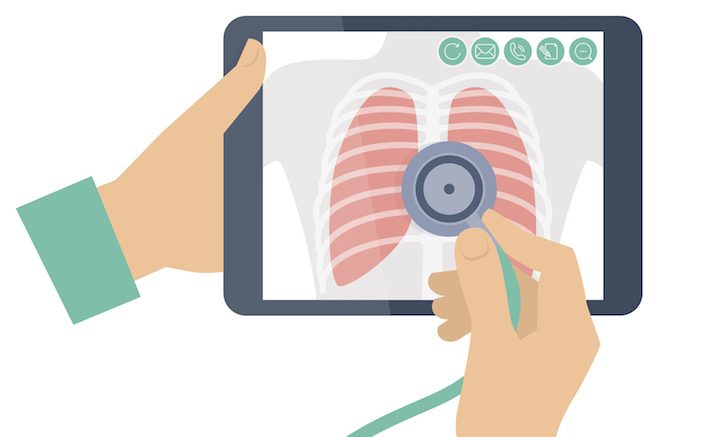The efficiencies gained by telemedicine have the ability to free up physicians to spend more time on complicated, high-touch cases.
One of the complaints I often hear about is the increase in the use of digital technology to interact with patients is that it takes the human touch out of medicine. Telemedicine technologies make the physician interaction sterile, mechanical, and lacking in human warmth, critics say. While no one is saying that talking to a person online is the same as talking to them in person, I would like to disagree with the premise that telemedicine will usher in an era of cold, faceless medicine. On the contrary, I contend that telemedicine has the potential of increasing human contact between patient and provider where it is needed most. How so, you might ask incredulously? Well, to answer that let’s look at two kinds of patients.
As a practicing clinician, I recognized long ago that there were basically two types of patients, those who wanted technical expertise and those who simply wanted someone to care. Of course, there is a lot of overlap. But for the sake of clarity, let’s look at the pure cases for each.
The first kind of patient looks at me and attempts to size up my intellect, my experience, my fund of knowledge. They could honestly care less whether I’m well groomed, professional, or even kind. They seem to even have a certain kind of respect for cold calculating brilliance. This kind of patient can even equate rudeness with intelligence. e character of Dr. House in the TV series of same name is the quintessential character of this type. Surly, aloof, but always insightful. He stares at the patient in a probing uncomfortable way, virtually ignoring the patient’s discomfort, all for the purpose of making the right diagnosis. The fact that this character is so popular speaks to the needs of a certain number of patients. Marcus Welby, MD – for those of you old enough to remember him – he is not. These patients will sue the doctor at the drop of a hat for a missed diagnosis. There is not an ounce of loyalty to the doctor, because a relationship is not what they came for. It was simply medical expertise.
The second group of patients is exactly the opposite. Typically older, these patients frequently don’t really care if the doctor comes up with the right diagnosis, as long as he or she really cared. For them, professionalism, patience, empathy are everything. These are the patients where I typically sit down at the bedside and ask open ended questions…and then try my hardest to appear interested in the answers. These patients often have chronic conditions or complaints that have been extensively worked up by a string of clinicians trying every test, every procedure all without much success. These patients are often very patient with the doctors efforts despite the fact that they have caused them multitudinous episodes of discomfort and expended thousands upon thousands of dollars, often to no avail, other that to show that the clinician will turn over every stone. These patient will seldom sue the “empathic doctor” even when he or she is shown to commit medical negligence. The right diagnosis is not what they came for. They simply came to find someone who cares.
So how does telemedicine help to increase the human contact between provider and patient? Simple. It takes out the time that is “wasted” with the first set of patients and allows more time for the second set. Of course, no time with patients is “wasted”. But time is one of the most precious assets a physician has. And the last thing a physician needs to do is spend that asset on a situation where it adds little to the value of the encounter. The first set of patients do not measure the value of their interaction in time spent. They want accuracy. And that’s where telemedicine is at its best.
By asking all of the questions that the busy clinician simply does not have time to ask and record, a digital interaction has the potential of gathering far more data, the cornerstone of a highly accurate diagnosis. If the digital interview is then able to convey this information to an experienced clinician who knows the limitations of the “machine”, a highly efficient and highly accurate medical interaction has occurred. A win-win for everyone.
That leaves us with the little old lady who desires high-touch care. Not only do the efficiencies gained by the first group of patients allow the physician to spend more time with this second set, it makes room for the fact that this second group can actually be quite complicated. Little old ladies get sick, too. And a good clinician knows that. So he spends time and money referring his patient for tests and procedures that he knows have little yield in the fear that he will miss something serious. Digital technologies are really the best at tracking these mundane details by asking and recording these seemingly endless, but important details. This allows the clinician the freedom and peace of mind to spend even more time on what the patient really wants, someone who simply asks “Mrs Wilson, how are you doing today?” even though he already knows the answer.







